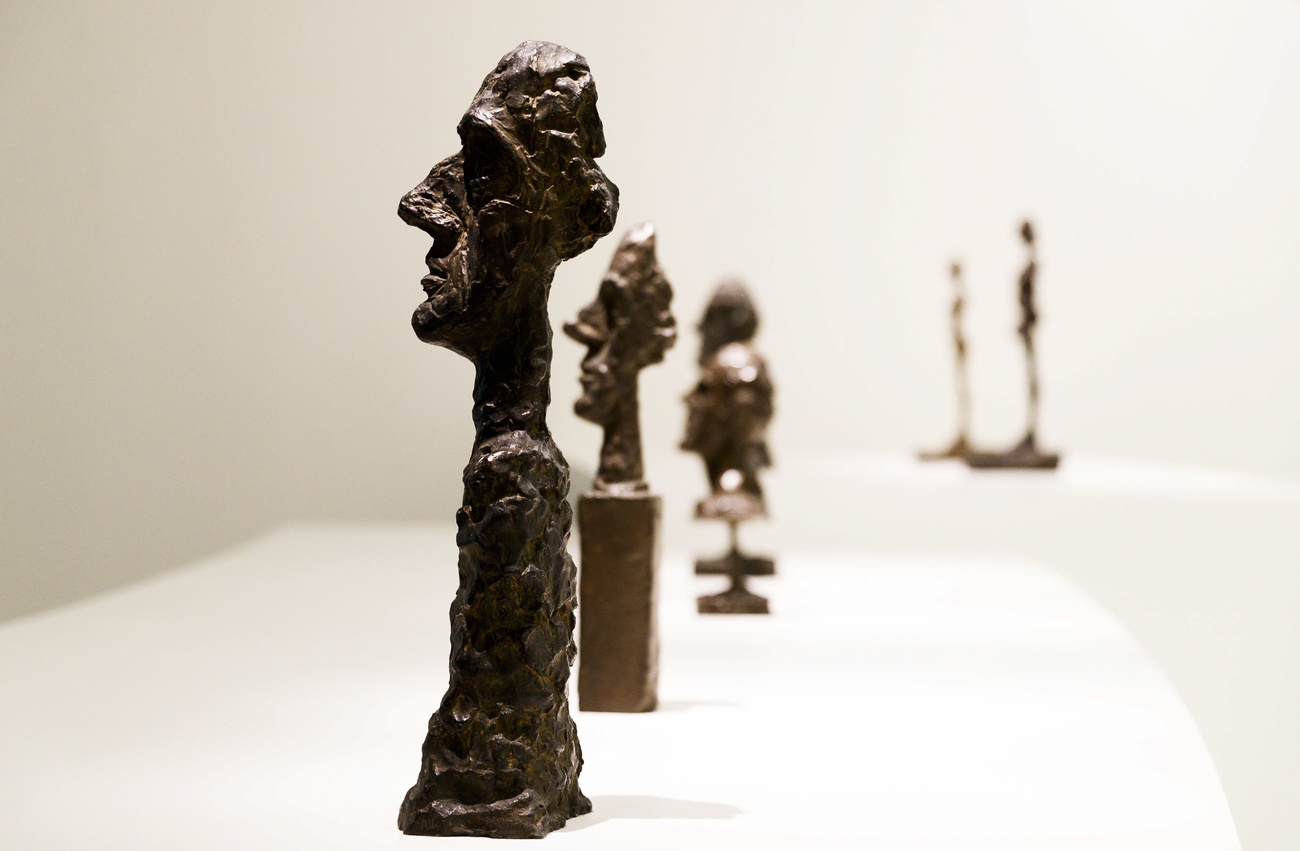
Giacometti museum and school to be built in Paris

The Giacometti Museum & School will be created in Paris in 2026, bringing together the largest collection in the world of works by Swiss artist Alberto Giacometti (1901-1966).
Located in the former Invalides train station and the basement of the esplanade, the 6,000-square-metre space “will reinvent the concept of an artist’s foundation and will be dedicated to fostering dialogues between the public, the artists, and the different modes of creative expression”, the Giacometti Foundation said in a statementExternal link on Monday.
The former station and its underground annexes, created for the 1900 Universal Exhibition, will be entirely renovated as part of a programme by the City of Paris.
It will be equipped with a museum that will “permanently and on a rotating basis display a large part of the 10,000 or so works of Giacometti collected by the foundation – including plaster and bronze sculptures, paintings, drawings, and decorative art objects – most of which are not currently accessible to the public”, said Catherine Grenier, director of the foundation, which was set up in Paris in 2003 following instructions by the artist’s widow, Annette Giacometti, who died in 1993.
It will also house exhibitions of modern and contemporary art “in line with the spirit” of Giacometti and a “non-professional creative school open to all, children and adults, experienced or novice”, she added.
The Giacometti Institute, also in Paris, will remain in place but “its activities will be rethought”, Grenier said. It currently houses Giacometti’s studio, which will be transferred to the future museum.

More
Giacometti – a communist, but above all free

In compliance with the JTI standards
More: SWI swissinfo.ch certified by the Journalism Trust Initiative
















![The four-metre-long painting "Sonntag der Bergbauern" [Sunday of the Mountain Farmers, 1923-24/26] had to be removed by a crane from the German Chancellery in Berlin for the exhibition in Bern.](https://www.swissinfo.ch/content/wp-content/uploads/sites/13/2025/12/01_Pressebild_KirchnerxKirchner.jpg?ver=a45b19f3)











You can find an overview of ongoing debates with our journalists here . Please join us!
If you want to start a conversation about a topic raised in this article or want to report factual errors, email us at english@swissinfo.ch.